当前位置:网站首页>Structural theme model (I) STM package workflow
Structural theme model (I) STM package workflow
2022-07-06 02:17:00 【Just like^_^】
Structure theme model ( One )stm Package workflow
Preface
On the thesis (stm: An R Package for Structural Topic Models) in stm Code workflow , The overall structure refers to the original paper , But I put forward my own ideas about the sequence of some code execution . Because time is limited , There are unresolved errors and problems ( For example, choose the appropriate number of topics 、 Draw a time trend chart ……), The later part of the paper is not described in detail , I hope a friend can put forward effective suggestions for modification , Bloggers will give feedback at the first time . Last , Hope to use STM Friends of structural theme model are helpful 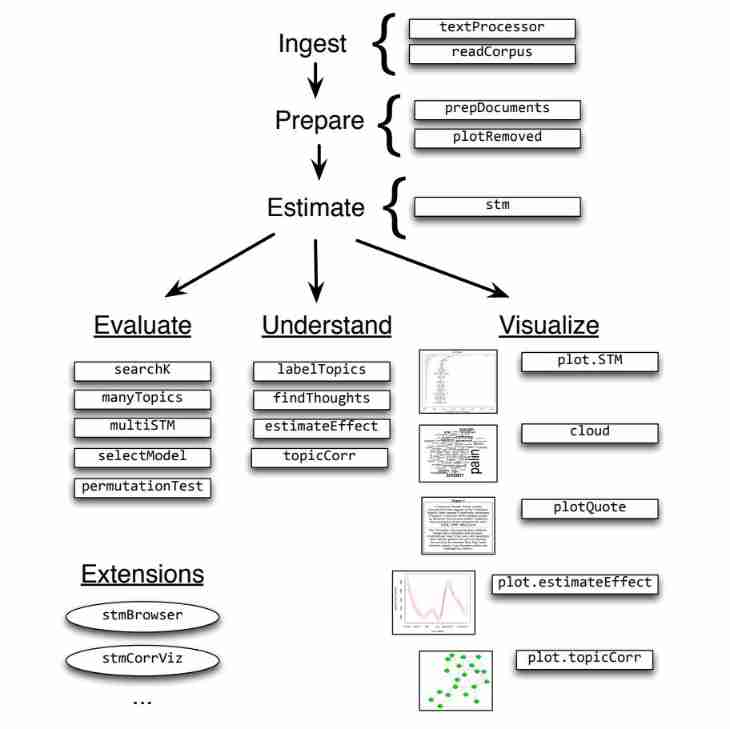
3.0 Reading data
Sample data poliblogs2008.csv For a blog post on American politics , come from CMU2008 Political blog corpus :American Thinker, Digby, Hot Air, Michelle Malkin, Think Progress, and Talking Points Memo. Every blog forum has its own political tendencies , So every blog has metadata of writing date and political ideology .
# data <- read.csv("./poliblogs2008.csv", sep =",", quote = "", header = TRUE, fileEncoding = "UTF-8")
data <- read_excel(path = "./poliblogs2008.xlsx", sheet = "Sheet1", col_names = TRUE)
With 3.0 The starting number is to keep consistent with the original paper
3.1 Ingest: Reading and processing text data
Extract the data : Process the raw data into STM Three pieces of content that can be analyzed ( Namely documents,vocab ,meta), What is used is textProcessor or readCorpus These two functions .
textProcessor() The function is designed to provide a convenient and fast way to process relatively small text , In order to use the software package for analysis . It aims to quickly capture data in a simple form , For example, spreadsheets , Each of these documents is in a single cell .
# call textProcessor Algorithm , take data$document、data As a parameter
processed <- textProcessor(documents = data$documents, metadata = data)
It is mentioned in the paper that ,
textProcessor()Can handle multiple languages , Variables need to be setlanguage = "en", customstopwords = NULL,. Bloggers did not try
3.2 Prepare: Associating text with metadata
Data preprocessing : Transform data format , Delete low-frequency words according to the threshold , What is used is prepDocuments() and plotRemoved() Two functions
plotRemoved() Function can draw deleted under different thresholds document、words、token Number
pdf("output/stm-plot-removed.pdf")
plotRemoved(processed$documents, lower.thresh = seq(1, 200, by = 100))
dev.off()
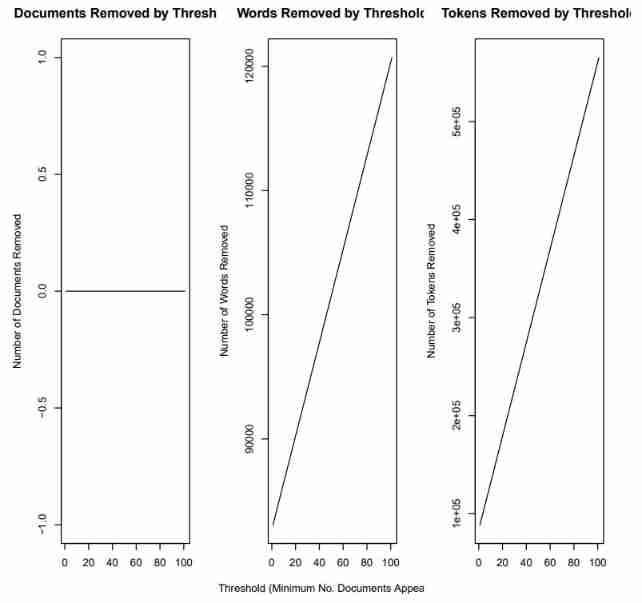
According to this pdf Results of documents (output/stm-plot-removed.pdf), determine prepDocuments() Parameters in lower.thresh The value of , To determine the variable docs、vocab、meta
It is mentioned in the paper that if there is any change in the process ,PrepDocuments All metadata will also be re indexed / Document relationships . for example , When the document is completely deleted in the preprocessing stage because it contains low-frequency words , that PrepDocuments() The corresponding row in the metadata will also be deleted . Therefore, after reading and processing text data , It is important to check the characteristics of documents and related vocabularies to ensure that they have been preprocessed correctly .
# Remove words with frequency lower than 15 's vocabulary
out <- prepDocuments(documents = processed$documents, vocab = processed$vocab, meta = processed$meta, lower.thresh = 15)
docs <- out$documents
vocab <- out$vocab
meta <- out$meta
docs:documents. A list of documents containing word indexes and their associated counts
vocab:a vocab character vector. Contains the words associated with the word index
meta:a metadata matrix. Contains document covariates
The following are two short articles documents: The first article contains 5 Word , Each word appears in vocab vector Of the 21、23、87、98、112 position , Except that the first word appears twice , The rest of the words appear only once . The second article contains 3 Word , The explanation is the same as above .
| [[1]] | |||||
|---|---|---|---|---|---|
| [,1] | [,2] | [,3] | [,4] | [,5] | |
| [1,] | 21 | 23 | 87 | 98 | 112 |
| [2,] | 2 | 1 | 1 | 1 | 1 |
| [[2]] | [,1] | [,2] | [,3] | ||
| [1,] | 16 | 61 | 90 | ||
| [2,] | 1 | 1 | 1 |
3.3 Estimate: Estimating the structural topic model
STM The key innovation of is it Merge metadata into the theme modeling framework . stay STM in , Metadata can be input into the topic model in two ways :** Theme popularity (topical prevalence)** And theme content (topical content). Metadata covariates in topic popularity allow observed metadata to affect the frequency of topics being discussed . Covariates in topic content allow observed metadata to affect word usage within a given topic —— That is, how to discuss specific topics . The estimation of theme popularity and theme content is through stm() Functionally progressive .
Theme popularity (topical prevalence) Indicates the contribution of each topic to a document , Because different documents come from different places , Therefore, we naturally hope that the popularity of topics can change with the change of metadata .
To be specific , The paper will variable rating( ideology ,Liberal,Conservative) As a covariate of topic popularity , Except ideology , You can also use + Add other covariates , Such as adding day” Variable ( Indicates the posting date )
s(day) Medium s() by spline function,a fairly flexible b-spline basis
day This variable is derived from 2008 From the first day to the last day of the year , It's like panel data equally , If the carry in sequence is set to day (365 individual penal), Will lose 300 Multiple degrees of freedom , So the introduction of spline function Solve the problem of freedom loss .
The stm package also includes a convenience functions(), which selects a fairly flexible b-spline basis. In the current example we allow for the variabledayto be estimated with a spline.
poliblogPrevFit <- stm(documents = out$documents, vocab = out$vocab, K = 20, prevalence = ~rating + s(day), max.em.its = 75, data = out$meta, init.type = "Spectral")
R The covariate of topic popularity prevalence It can be expressed as a formula containing multiple oblique variables and factorials or continuous covariates , stay spline package There are other standard conversion functions in :log()、ns()、bs()
As the iteration goes on , If bound The change is small enough , It is considered that the model converges converge 了 .
3.4 Evaluate: Model selection and search
- Model initialization for a fixed number of topics Create an initialization model for a specified number of topics
Because the posterior of mixed topic model is often non convex and difficult to solve , The determination of the model depends on the starting value of the parameter ( for example , Word distribution for a specific topic ). There are two ways to implement model initialization :
- spectral initialization.
init.type="Spectral". This method is preferred - a collapsed Gibbs sampler for LDA
poliblogPrevFit <- stm(documents = out$documents, vocab = out$vocab, K = 20, prevalence = ~rating + s(day), max.em.its = 75, data = out$meta, init.type = "Spectral")
- Model selection for a fixed number of topics Select a model for a specified number of topics
poliblogSelect <- selectModel(out$documents, out$vocab, K = 20, prevalence = ~rating + s(day), max.em.its = 75, data = out$meta, runs = 20, seed = 8458159)
selectModel() First, build a network of running models (net), And run all models in turn ( Less than 10 Time )E step and M step, Abandon low likelihood Model of , Then only run high likelihood Before 20% Model of , Until it converges (convergence) Or reach the maximum number of iterations (max.em.its)
adopt plotModels() Semantic consistency of function display (semantic coherence) And exclusivity (exclusivity) Choose the right model ,semcoh and exclu The larger the model, the better
# Draw the average score of the graph. Each model uses different legends
plotModels(poliblogSelect, pch=c(1,2,3,4), legend.position="bottomright")
# Choose a model 3
selectedmodel <- poliblogSelect$runout[[3]]
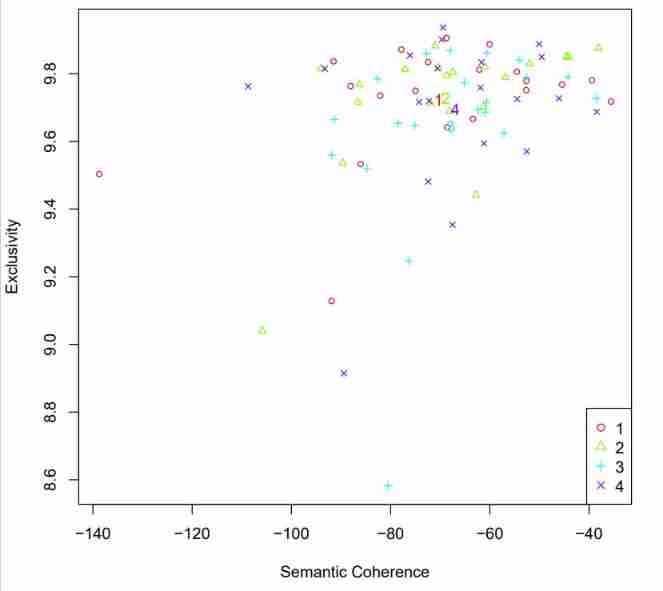
- Model search across numbers of topics Determine the appropriate number of topics
storage <- searchK(out$documents, out$vocab, K = c(7, 10), prevalence = ~rating + s(day), data = meta)
# Visually select the number of topics with the help of chart visualization
pdf("stm-plot-ntopics.pdf")
plot(storage)
dev.off()
# Select the number of topics with the help of actual data
t <- storage$out[[1]]
t <- storage$out[[2]]
Compare the number of two or more topics , By comparing semantic coherence SemCoh And exclusivity Exl Determine the appropriate number of topics
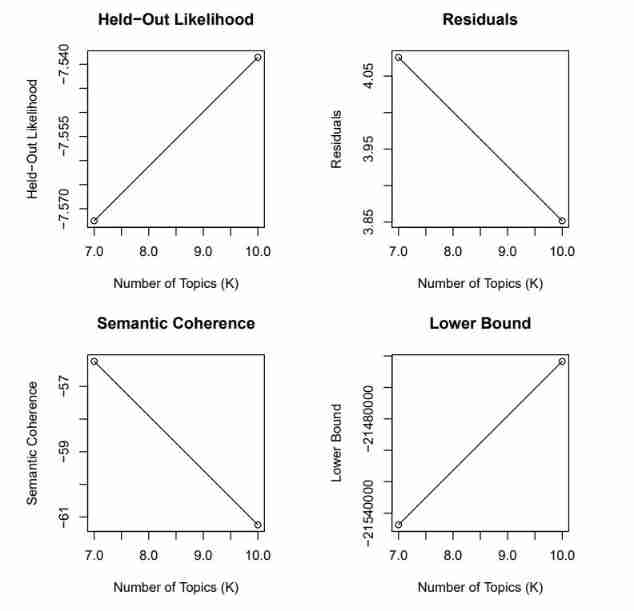
3.5 Understand: Interpreting the STM by plotting and inspecting results
After selecting the model , It is through stm Some functions provided in the package to show the results of the model . To keep consistent with the original paper , Use the initial model poliblogPrevFit As a parameter , Instead of SelectModel
Sort the high-frequency words under each topic :labelTopics()、sageLabels()
Both functions output words related to each topic , among sageLabels() Use only for models that contain content covariates . Besides ,sageLabels() Function result ratio labelTopics() A more detailed , By default, high-frequency words and other information under all topics are output
# labelTopics() Label topics by listing top words for selected topics 1 to 5.
labelTopicsSel <- labelTopics(poliblogPrevFit, c(1:5))
sink("output/labelTopics-selected.txt", append=FALSE, split=TRUE)
print(labelTopicsSel)
sink()
# sageLabels() Than labelTopics() Output more detailed
sink("stm-list-sagelabel.txt", append=FALSE, split=TRUE)
print(sageLabels(poliblogPrevFit))
sink()
TODO: The output results of the two functions are different
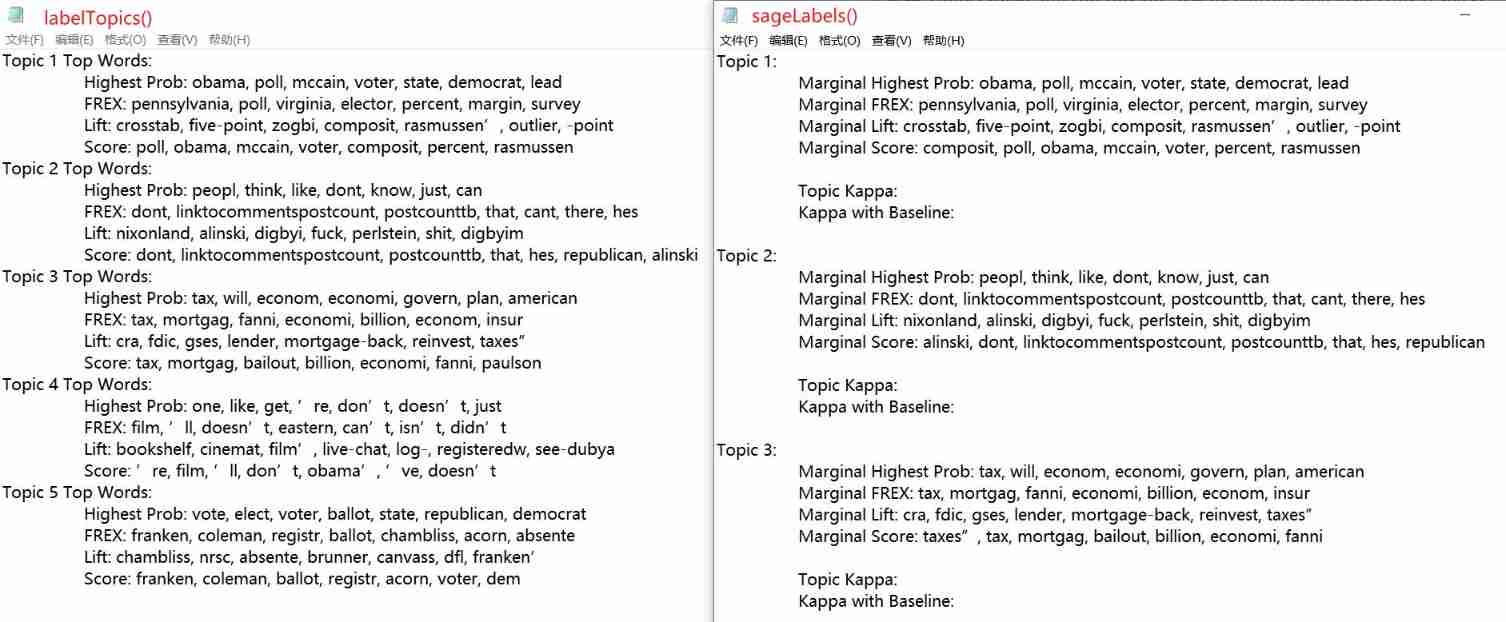
List documents that are highly relevant to a topic :findthoughts()
shortdoc <- substr(out$meta$documents, 1, 200)
# Parameters 'texts=shortdoc' Means before outputting each document 200 Characters ,n Indicates the number of output related documents
thoughts1 <- findThoughts(poliblogPrevFit, texts=shortdoc, n=2, topics=1)$docs[[1]]
pdf("findThoughts-T1.pdf")
plotQuote(thoughts1, width=40, main="Topic 1")
dev.off()
# how about more documents for more of these topics?
thoughts6 <- findThoughts(poliblogPrevFit, texts=shortdoc, n=2, topics=6)$docs[[1]]
thoughts18 <- findThoughts(poliblogPrevFit, texts=shortdoc, n=2, topics=18)$docs[[1]]
pdf("stm-plot-find-thoughts.pdf")
# mfrow=c(2, 1) The diagram will be output to 2 That's ok 1 In the table of columns
par(mfrow = c(2, 1), mar = c(.5, .5, 1, .5))
plotQuote(thoughts6, width=40, main="Topic 6")
plotQuote(thoughts18, width=40, main="Topic 18")
dev.off()

Estimate metadata and topics / The relationship between topics :estimateEffect
out$meta$rating<-as.factor(out$meta$rating)
# since we're preparing these coVariates by estimating their effects we call these estimated effects 'prep'
# we're estimating Effects across all 20 topics, 1:20. We're using 'rating' and normalized 'day,' using the topic model poliblogPrevFit.
# The meta data file we call meta. We are telling it to generate the model while accounting for all possible uncertainty. Note: when estimating effects of one covariate, others are held at their mean
prep <- estimateEffect(1:20 ~ rating+s(day), poliblogPrevFit, meta=out$meta, uncertainty = "Global")
summary(prep, topics=1)
summary(prep, topics=2)
summary(prep, topics=3)
summary(prep, topics=4)
uncertainty Yes "Global", “Local”, "None" Three options ,The default is “Global”, which will incorporate estimation uncertainty of the topic proportions into the uncertainty estimates using the method of composition. If users do not propagate the full amount of uncertainty, e.g., in order to speed up computational time, they can choose uncertainty = “None”, which will generally result in narrower confidence intervals because it will not include the additional estimation uncertainty.
summary(prep, topics=1) Output results :
Call:
estimateEffect(formula = 1:20 ~ rating + s(day), stmobj = poliblogPrevFit,
metadata = meta, uncertainty = "Global")
Topic 1:
Coefficients:
Estimate Std. Error t value Pr(>|t|)
(Intercept) 0.068408 0.011233 6.090 1.16e-09 ***
ratingLiberal -0.002513 0.002588 -0.971 0.33170
s(day)1 -0.008596 0.021754 -0.395 0.69276
s(day)2 -0.035476 0.012314 -2.881 0.00397 **
s(day)3 -0.002806 0.015696 -0.179 0.85813
s(day)4 -0.030237 0.013056 -2.316 0.02058 *
s(day)5 -0.026256 0.013791 -1.904 0.05695 .
s(day)6 -0.010658 0.013584 -0.785 0.43269
s(day)7 -0.005835 0.014381 -0.406 0.68494
s(day)8 0.041965 0.016056 2.614 0.00897 **
s(day)9 -0.101217 0.016977 -5.962 2.56e-09 ***
s(day)10 -0.024237 0.015679 -1.546 0.12216
---
Signif. codes: 0 ‘***’ 0.001 ‘**’ 0.01 ‘*’ 0.05 ‘.’ 0.1 ‘ ’ 1
3.6 Visualize: Presenting STM results
Summary visualization
Topic proportion bar chart
# see PROPORTION OF EACH TOPIC in the entire CORPUS. Just insert your STM output
pdf("top-topic.pdf")
plot(poliblogPrevFit, type = "summary", xlim = c(0, .3))
dev.off()
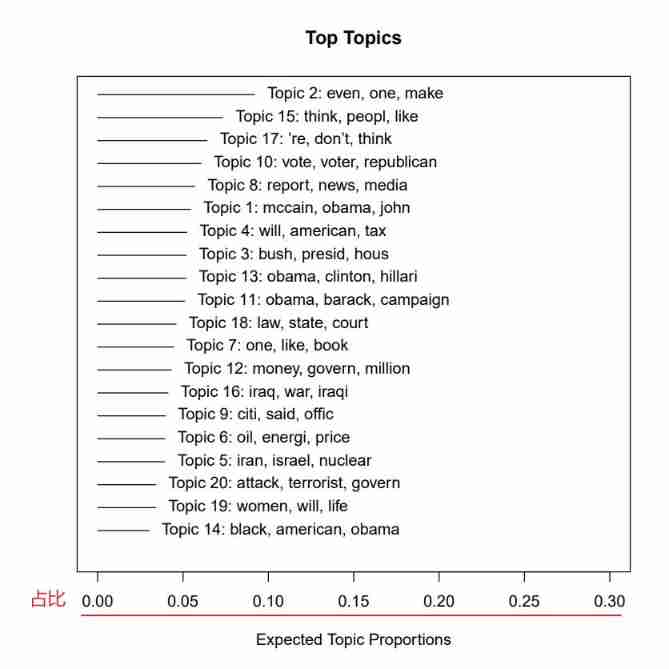
Metadata/topic relationship visualization
Topic relationship comparison diagram
pdf("stm-plot-topical-prevalence-contrast.pdf")
plot(prep, covariate = "rating", topics = c(6, 13, 18),
model = poliblogPrevFit, method = "difference",
cov.value1 = "Liberal", cov.value2 = "Conservative",
xlab = "More Conservative ... More Liberal",
main = "Effect of Liberal vs. Conservative",
xlim = c(-.1, .1), labeltype = "custom",
custom.labels = c("Obama/McCain", "Sarah Palin", "Bush Presidency"))
dev.off()
The theme 6、13、18 The custom label is "Obama/McCain"、“Sarah Palin”、“Bush Presidency”, The theme 6、 The theme 13 Our ideology is neutral , Neither conservative , Nor is it freedom , The theme 18 Our ideology tends to be conservative .
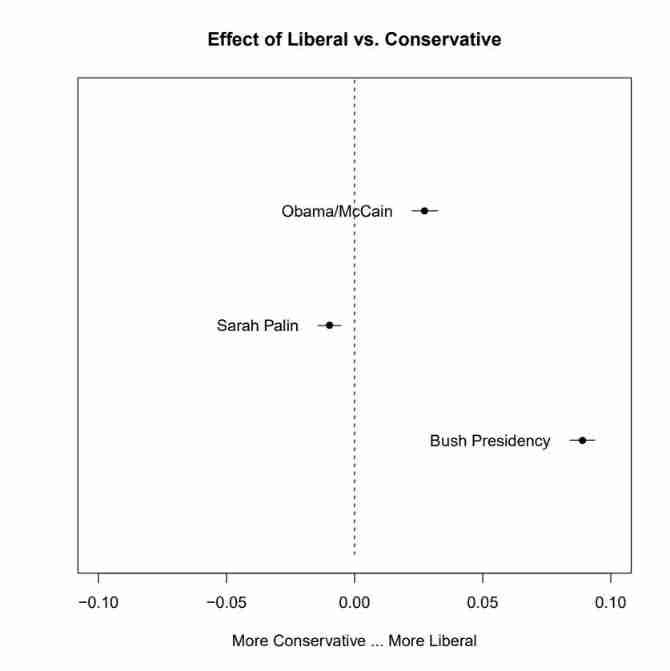
Trend chart of theme changing over time
pdf("stm-plot-topic-prevalence-with-time.pdf")
plot(prep, "day", method = "continuous", topics = 13,
model = z, printlegend = FALSE, xaxt = "n", xlab = "Time (2008)")
monthseq <- seq(from = as.Date("2008-01-01"), to = as.Date("2008-12-01"), by = "month")
monthnames <- months(monthseq)
# There were 50 or more warnings (use warnings() to see the first 50)
axis(1, at = as.numeric(monthseq) - min(as.numeric(monthseq)), labels = monthnames)
dev.off()
Operation error reporting , But you can output the following pictures , Unknown cause
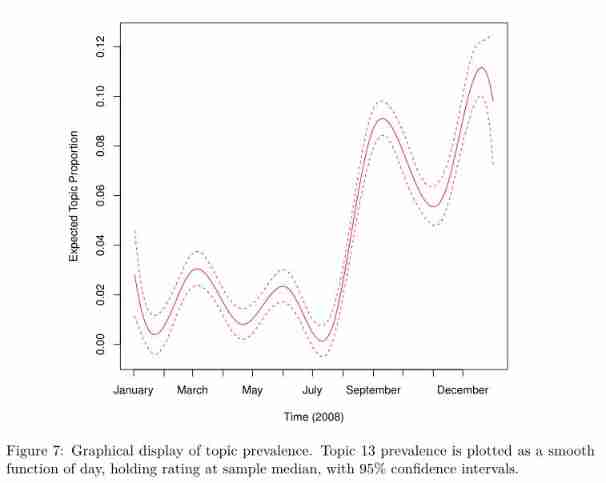
topic content
Show which words in a topic are more relevant to one variable value and another variable value .
# TOPICAL CONTENT.
# STM can plot the influence of covariates included in as a topical content covariate.
# A topical content variable allows for the vocabulary used to talk about a particular
# topic to vary. First, the STM must be fit with a variable specified in the content option.
# Let's do something different. Instead of looking at how prevalent a topic is in a class of documents categorized by meta-data covariate...
# ... let's see how the words of the topic are emphasized differently in documents of each category of the covariate
# First, we we estimate a new stm. It's the same as the old one, including prevalence option, but we add in a content option
poliblogContent <- stm(out$documents, out$vocab, K = 20,
prevalence = ~rating + s(day), content = ~rating,
max.em.its = 75, data = out$meta, init.type = "Spectral")
pdf("stm-plot-content-perspectives.pdf")
plot(poliblogContent, type = "perspectives", topics = 10)
dev.off()
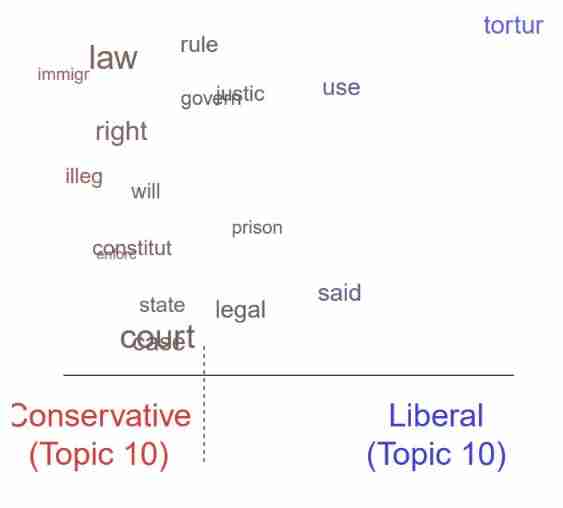
The theme 10 Related to Cuba . Its most commonly used word is “ detention 、 A jail sentence 、 court 、 illegal 、 cruel torture 、 Enforcement 、 Cuba ”. It shows the different views of liberals and conservatives on this theme , Liberals emphasize “ cruel torture ”, Conservatives stress “ illegal ” and “ law ” And other typical court language
original text :Its top FREX words were “detaine, prison, court, illeg, tortur, enforc, guantanamo” Medium
torturShould betorture
Draw lexical differences between topics
pdf("stm-plot-content-perspectives-16-18.pdf")
plot(poliblogPrevFit, type = "perspectives", topics = c(16, 18))
dev.off()
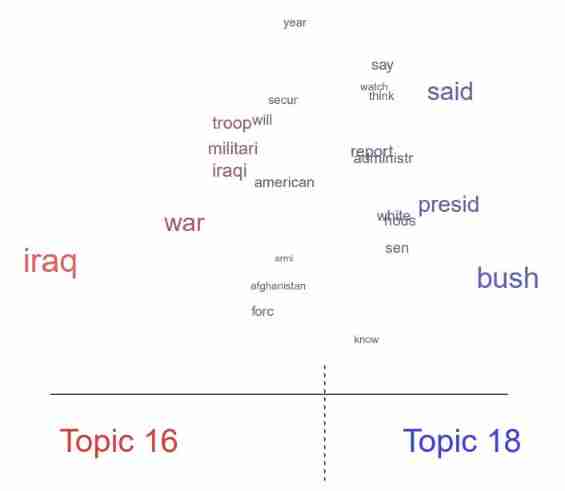
Plotting covariate interactions
# Interactions between covariates can be examined such that one variable may ??moderate??
# the effect of another variable.
###Interacting covariates. Maybe we have a hypothesis that cities with low $$/capita become more repressive sooner, while cities with higher budgets are more patient
##first, we estimate an STM with the interaction
poliblogInteraction <- stm(out$documents, out$vocab, K = 20,
prevalence = ~rating * day, max.em.its = 75,
data = out$meta, init.type = "Spectral")
# Prep covariates using the estimateEffect() function, only this time, we include the
# interaction variable. Plot the variables and save as pdf files.
prep <- estimateEffect(c(16) ~ rating * day, poliblogInteraction,
metadata = out$meta, uncertainty = "None")
pdf("stm-plot-two-topic-contrast.pdf")
plot(prep, covariate = "day", model = poliblogInteraction,
method = "continuous", xlab = "Days", moderator = "rating",
moderator.value = "Liberal", linecol = "blue", ylim = c(0, 0.12),
printlegend = FALSE)
plot(prep, covariate = "day", model = poliblogInteraction,
method = "continuous", xlab = "Days", moderator = "rating",
moderator.value = "Conservative", linecol = "red", add = TRUE,
printlegend = FALSE)
legend(0, 0.06, c("Liberal", "Conservative"),
lwd = 2, col = c("blue", "red"))
dev.off()
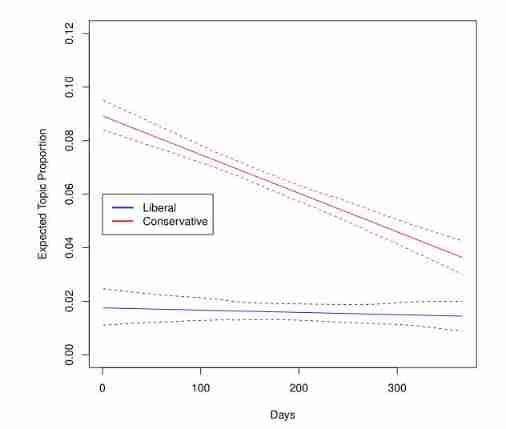
The figure above depicts the time ( Blog posting day ) And ratings ( Liberals and conservatives ) The relationship between . The theme 16 The prevalence is plotted as a linear function of time , The score is 0( free ) or 1( conservative ).
3.7 Extend: Additional tools for interpretation and visualization
Draw a cloud of words
pdf("stm-plot-wordcloud.pdf")
cloud(poliblogPrevFit, topic = 13, scale = c(2, 0.25))
dev.off()

Topic relevance
# topicCorr().
# STM permits correlations between topics. Positive correlations between topics indicate
# that both topics are likely to be discussed within a document. A graphical network
# display shows how closely related topics are to one another (i.e., how likely they are
# to appear in the same document). This function requires 'igraph' package.
# see GRAPHICAL NETWORK DISPLAY of how closely related topics are to one another, (i.e., how likely they are to appear in the same document) Requires 'igraph' package
mod.out.corr <- topicCorr(poliblogPrevFit)
pdf("stm-plot-topic-correlations.pdf")
plot(mod.out.corr)
dev.off()
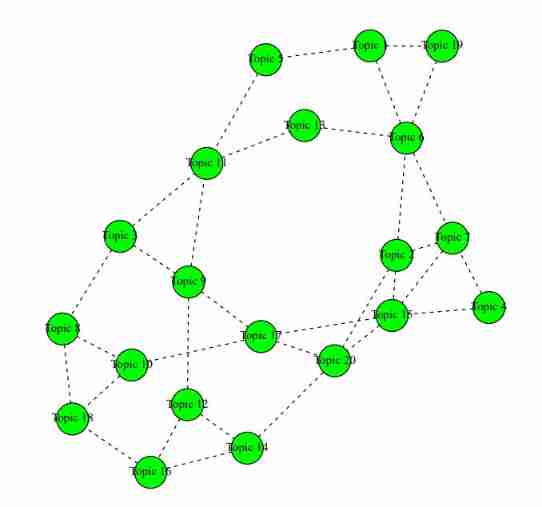
stmCorrViz
stmCorrViz software package Provides a different d3 Visual environment , This environment focuses on using hierarchical clustering methods to group topics , Thus visualizing topic relevance .
There is a garbled code problem
# The stmCorrViz() function generates an interactive visualisation of topic hierarchy/correlations in a structural topicl model. The package performs a hierarchical
# clustering of topics that are then exported to a JSON object and visualised using D3.
# corrViz <- stmCorrViz(poliblogPrevFit, "stm-interactive-correlation.html", documents_raw=data$documents, documents_matrix=out$documents)
stmCorrViz(poliblogPrevFit, "stm-interactive-correlation.html",
documents_raw=data$documents, documents_matrix=out$documents)
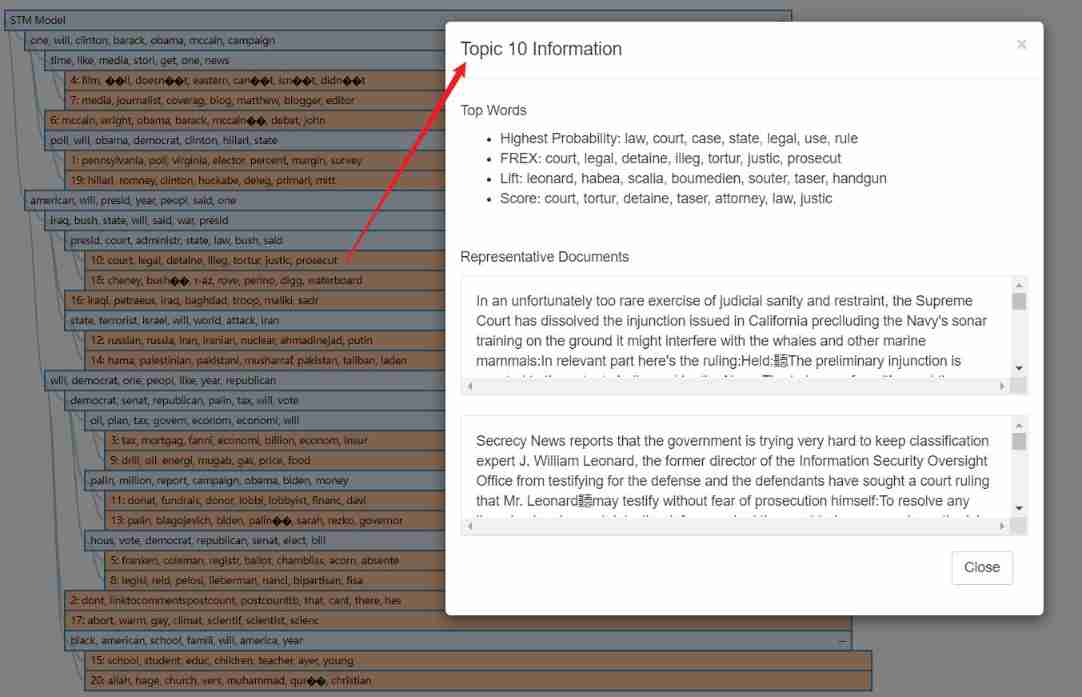
4 Changing basic estimation defaults
This section explains how to change stm The default setting in the estimation command of the package
First, we discuss how to choose among different methods of initializing model parameters , Then discuss how to set and evaluate convergence criteria , Then describe a method to accelerate convergence when analyzing documents containing tens of thousands or more , Last , Discuss some changes in the covariate model , These changes allow users to control the complexity of the model .
problem
ems.its and run What's the difference ?ems.its Group iterated algebra of representation , Every iteration run=20?
3.4-3 How to determine the appropriate number of topics according to the four diagrams ?
Add
stay Ingest part , The author mentioned other methods for text processing quanteda package , This package can easily import text and related metadata , Prepare the text to be processed , And convert the document into a document term matrix (document-term matrix). Another bag ,readtext Contains very flexible tools , Used to read various text formats , Such as plain text 、XML and JSON Format , You can easily create a corpus from it .
To read data from other text handlers , You can use txtorg, This program can create three independent files :a metadata file, a vocabulary file, and a file with the original documents. The default export format is LDA-C sparse matrix format, It can be used readCorpus() Set up "ldac"option To read
The paper :stm: An R Package for Structural Topic Models (harvard.edu)
Reference article :R Software STM package Practice - Bili, Bili (bilibili.com)
relevant github Warehouse :
JvH13/FF-STM: Web Appendix - Methodology for Structural Topic Modeling (github.com)
dondealban/learning-stm: Learning structural topic modeling using the stm R package. (github.com)
bstewart/stm: An R Package for the Structural Topic Model (github.com)
边栏推荐
- MySQL learning notes - subquery exercise
- 怎么检查GBase 8c数据库中的锁信息?
- Redis list
- leetcode-2. Palindrome judgment
- Selenium waiting mode
- Concept of storage engine
- 模板_快速排序_双指针
- Social networking website for college students based on computer graduation design PHP
- Adapter-a technology of adaptive pre training continuous learning
- Blue Bridge Cup embedded_ STM32_ New project file_ Explain in detail
猜你喜欢
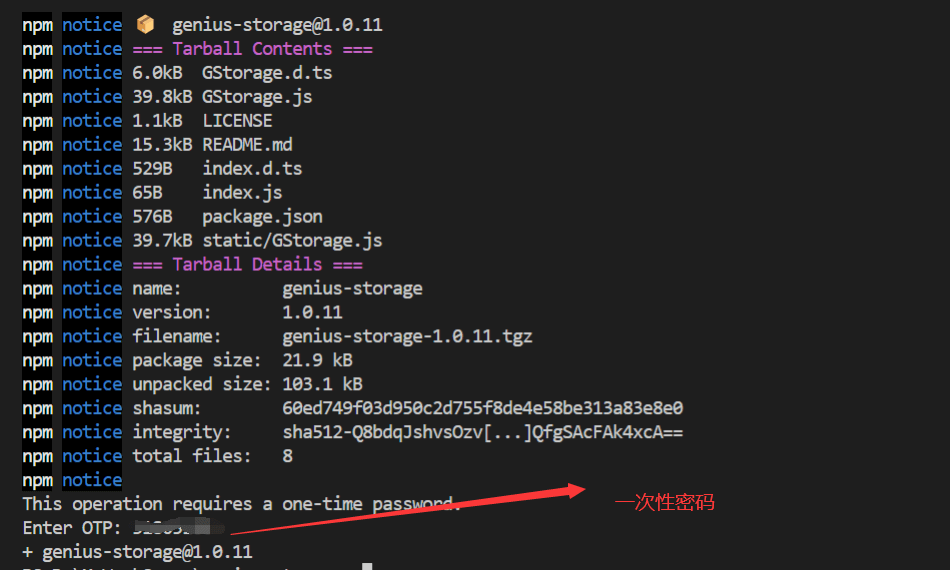
使用npm发布自己开发的工具包笔记
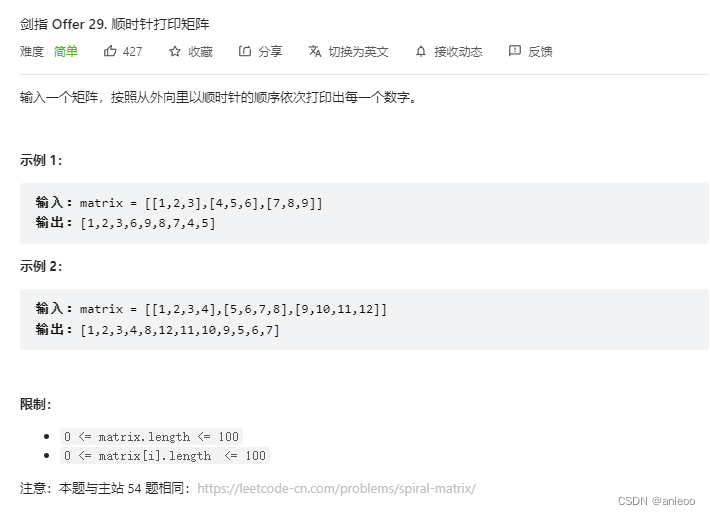
剑指 Offer 29. 顺时针打印矩阵
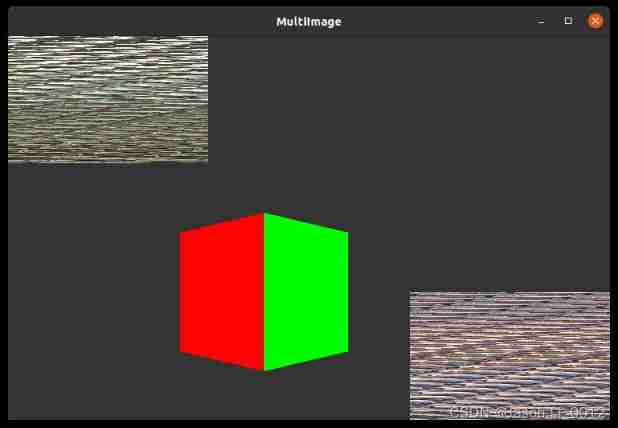
Pangolin Library: subgraph
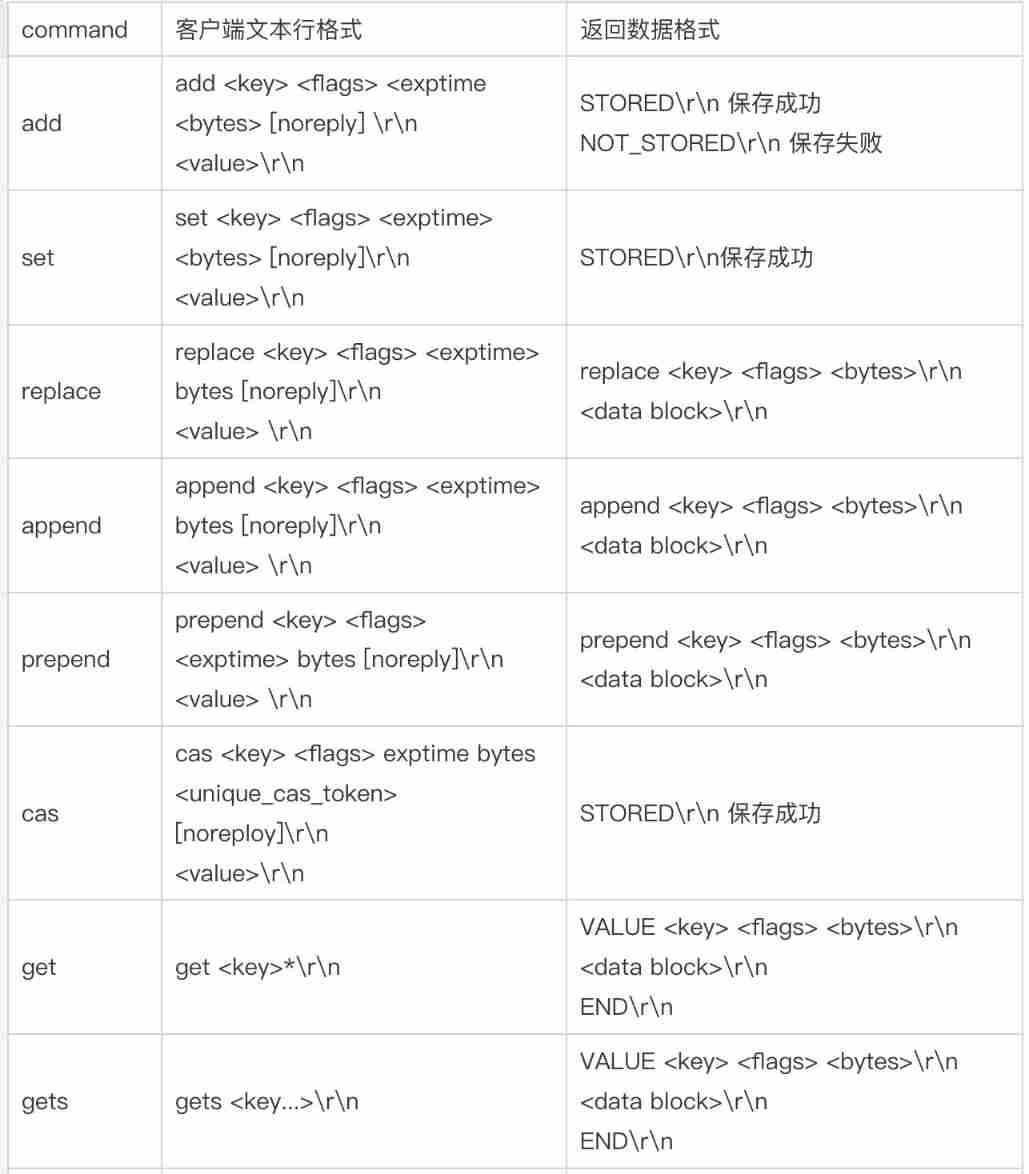
500 lines of code to understand the principle of mecached cache client driver
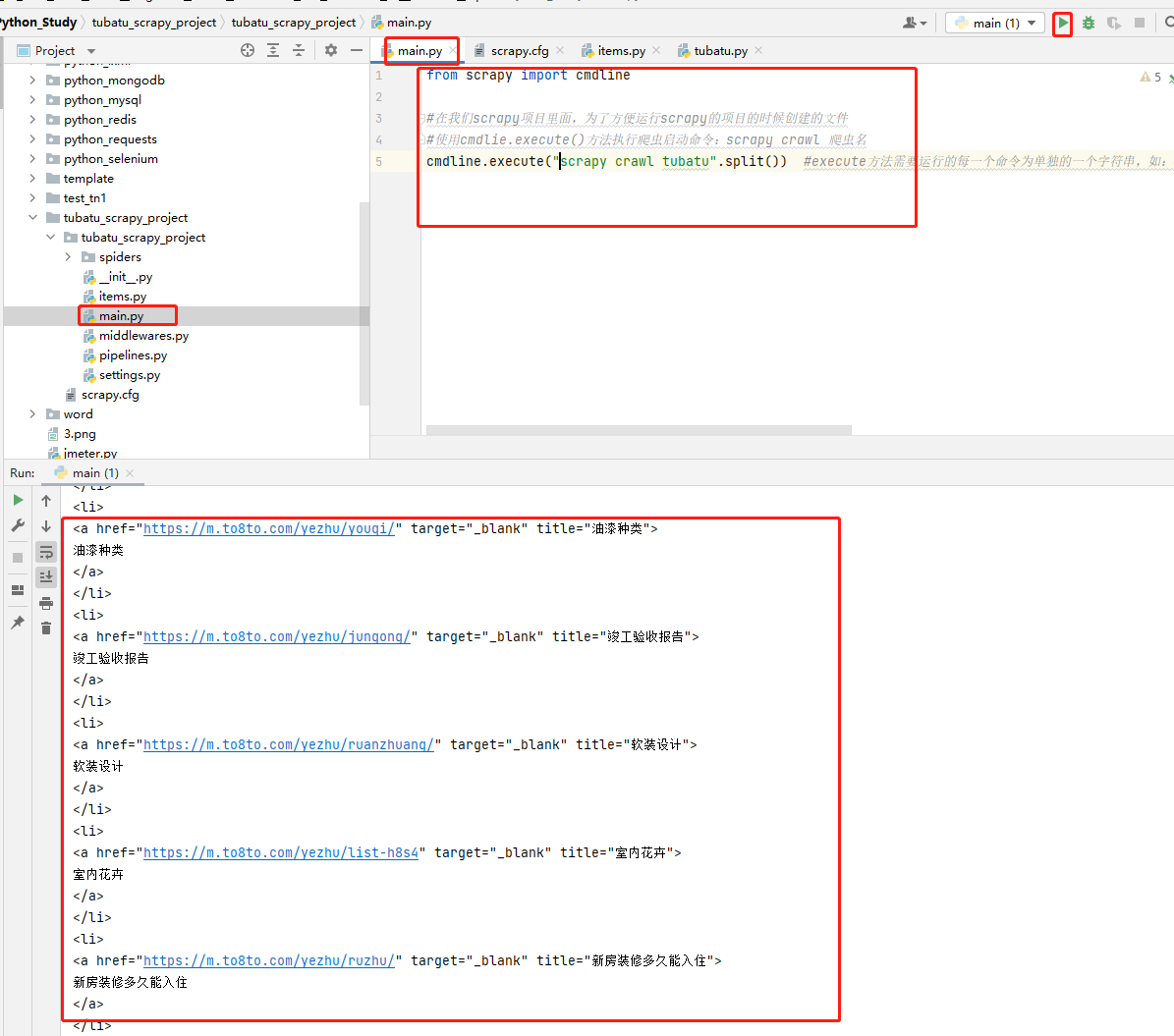
爬虫(9) - Scrapy框架(1) | Scrapy 异步网络爬虫框架
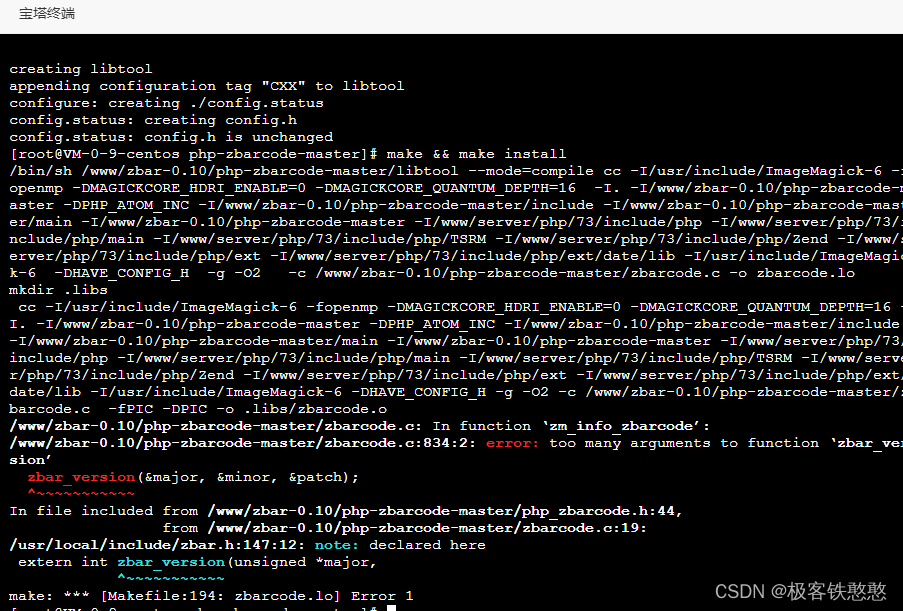
安装php-zbarcode扩展时报错,不知道有没有哪位大神帮我解决一下呀 php 环境用的7.3
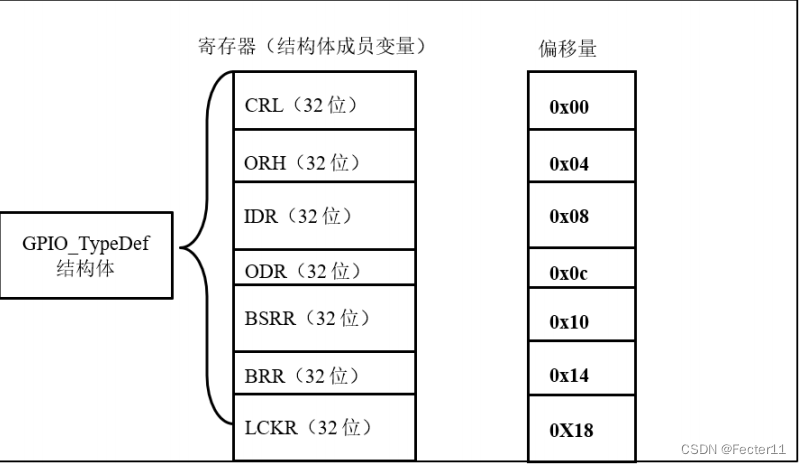
零基础自学STM32-复习篇2——使用结构体封装GPIO寄存器

The ECU of 21 Audi q5l 45tfsi brushes is upgraded to master special adjustment, and the horsepower is safely and stably increased to 305 horsepower
![[robot library] awesome robots Libraries](/img/72/d3e46a820796a48b458cd2d0a18f8f.png)
[robot library] awesome robots Libraries

Blue Bridge Cup embedded_ STM32 learning_ Key_ Explain in detail
随机推荐
Method of changing object properties
Xshell 7 Student Edition
模板_快速排序_双指针
Tensorflow customize the whole training process
How to improve the level of pinduoduo store? Dianyingtong came to tell you
Regular expressions: examples (1)
leetcode3、實現 strStr()
Unity learning notes -- 2D one-way platform production method
Paper notes: limit multi label learning galaxc (temporarily stored, not finished)
Genius storage uses documents, a browser caching tool
RDD creation method of spark
Jisuanke - t2063_ Missile interception
【无标题】数据库中一条查询SQL执行的过程
[robot library] awesome robots Libraries
ftp上传文件时出现 550 Permission denied,不是用户权限问题
The intelligent material transmission system of the 6th National Games of the Blue Bridge Cup
How to generate rich text online
[Clickhouse] Clickhouse based massive data interactive OLAP analysis scenario practice
Minecraft 1.16.5 biochemical 8 module version 2.0 storybook + more guns
[coppeliasim] 6-DOF path planning